LMFP industry special report in 2022
In recent years, the energy density of lithium ion battery improvement has rapidly approached the limit. The energy density of the 2010 BYD E6LFP battery is only 90Wh/kg. With the continuous iteration of battery technology, according to the list of recommended models for new energy promotion and application.

Why develop LMFP
The lithium ion route is close to the theoretical extreme
The maximum energy density of the LFP battery system in 2022 is 161.27Wh/kg, and this maximum value has hardly changed in the past two years. Since then, the great development of the LMFP system has emerged.
Lithium iron manganese phosphate
Under the extreme value of LFP energy densitfy, a new way of iron-lithium cracking
LMFP: exists in the form of ferromanganese solid solution rather than simple physical mixing. Doping Fe in LMP to form LMFP solid solution can well combine the advantages of LMP and LFP. The XRD patterns of the samples were compared with the standard spectra of LMP and LPM.
It can be seen that in the samples with x values of 0.1, 0.3, 0.5, 0.7, 0.9, the peaks of LMP or LFP do not appear at the same time. It shows that the mixing of LMP and LFP in the sample is in the form of solid solution rather than simple physical mixing.
The LFP energy density is theoretically less likely to increase. Energy density = gram capacity × voltage plateau ÷ volume.
It can be seen from the formula that the energy density is only related to the gram capacity and voltage platform of the material when the volume is constant. The voltage platform is related to the physical structure. The voltage platform of the lithium iron phosphate material is 3.4V; while the gram capacity of lithium iron phosphate is currently close to 160mAh/g, which is close to the theoretical limit.
With the rapid rise in demand for new energy vehicles, rising raw material prices, and some of the original battery systems approaching the theoretical extreme, battery factories and cathode factories have further increased their desire for solutions that can technically improve energy density.
Previously, due to the performance of lithium iron manganese phosphate and the difficulty of production, it was silent for a long time, but the energy density of lithium iron phosphate battery is close to the extreme value, and many manufacturers have begun to pay attention to manganese phosphate because of its economy. Lithium iron.
Positive electrode manufacturers: The voltage platform of lithium iron phosphate is 3.4V, while the lithium iron manganese phosphate can reach 4.1V. Theoretically, the energy density of LMFP is increased by 20%+.
Moreover, manganese is not a rare metal, and the global manganese ore resources are very rich. The cost of lithium iron manganese phosphate increases by about 5-10% compared with the cost of lithium iron phosphate raw materials. The development of lithium iron manganese is economical.
Battery manufacturers: The production equipment for the production of LMFP batteries and the production of LFP batteries has little change, no need to rebuild the production line, and the change cost is low, which is economical.
Comparison of electrochemical performance of NCM523, LFP and LMFP
| NCM523 | LFP | LMFP | |
| Material structure | Lamellar | Almond | Almond |
| Conductivity | good | Excellent | Generally |
| Compaction density(g/cm3) | 3.4-3.8 | 2.3-2.6 | 2.3-2.6 |
| Voltage platform(V) | 2.8-4.5 | 3.4 | 4.1 |
| Theoretical specific capacity(mAh/g) | 273 | 170 | 170 |
| Actual specific capacity(mAh/g) | 155-160 | 140-150 | 140-150 |
| Cycle life(times) | 800-2000 | 2000-6000 | 2000 |
What is a good LMFP
Performance problems of LMFP
As an “upgraded version” of LFP, LMFP inherits the advantages of low cost, high thermal stability, and high safety of LFP, and makes up for its shortcomings such as low energy density and poor low temperature stability, but LMFP also has electrical conductivity and rate performance. and poor cycle performance.
The problem of electrical conductivity is relatively simple, and most companies in the industry have solved it; in addition, some leading companies in the industry have broken through the problems of dual voltage, specific capacity and circulation;
The problem of manganese precipitation caused by the Jahn-Teller effect is the biggest pain point. The industry is breaking through, and a few companies have made progress.
Battery rate: nC, n refers to the number of times of charging/discharging in one hour, the larger the n value, the higher the charging/discharging rate;
Rate performance: The larger the capacity released at high rate, the better the performance. The rate performance is directly related to the mobility of lithium ions, and all factors that affect the migration speed of lithium ions will affect the charge and discharge rate performance of lithium ion batteries.
Specific capacity, stability and cycle performance issues
Jahn-Teller effect, Mn3+ is easy to dissolve, the industry is breaking through, and a few companies have made progress
Principle:
1. LMFP still has the LMPJahn-Teller effect (Mn 3+ is enriched on the surface of the positive electrode particles, distorting the manganese-oxygen octahedron, which in turn leads to the precipitation of manganese), resulting in the thickening of the SEI film (consumption of active lithium).
2. MnPO4 is unstable at high potential.
3. The increase of the ratio of manganese to iron will increase the probability of manganese precipitation, which will lead to the aggravation of the side reaction between the electrode and the electrolyte. 4. The LMP lattice is easy to form some oxygen vacancies.
Influence: According to formula 1, the reduction of active lithium means that m decreases, and the theoretical specific capacity C0 decreases;
At the same time, the precipitation of manganese leads to lattice distortion, structural collapse, poor cycle stability and short battery life, and the stability of the material also decreases.
Solution: At present, manganese dissolution is mainly reduced and the Jahn-Teller effect is overcome by adjusting the ratio of manganese to iron reasonably (reducing the ratio of manganese), modifying the core-shell structure, and synthesizing manganese-iron-lithium cathode materials with concentration gradients.
Solution 1: Synthesize manganese-iron-lithium cathode materials with concentration gradient or core-shell structure, both of which belong to surface modification, which reduces the distribution of manganese on the surface of the material and alleviates the problem of manganese dissolution.
| Difference between core-shell structure and concentration gradient | |||
| Same | Difference | Details | |
| Concentration gradient | Both belong to surface modification, stabilize the structure, reduce the dissolution of Mn | Reduce the surface Mn content: along the radial direction, the Fe element concentration increases, while the Mn element concentration decreases | The lean manganese solution is added to the manganese-rich solution at a rate of 1-3L/h. After mixing evenly, the mixed solution is added to the phosphorus source solution, and the molar ratio of metal ions and phosphorus source in the mixed solution is controlled to be 1:1. Under the protection of ammonia gas, stirring and heating, washing and drying, the precursor of ferromanganese phosphate with gradient structure was obtained. |
| Core-shell structure | The shell structure wraps the inner core LMFP to reduce the contact between Mn and electrolyte | The core material LiaMnbFecDdPO4, wherein, a=0.85-1.15, b=0.65-0.95, c=0.0490.349, d=0-0.075; The shell material includes carbon and metal phosphate, and the metal is selected from magnesium, calcium, cobalt, nickel, Copper, zinc, aluminum, gallium, scandium, yttrium, mace, titanium, chromium, vanadium, niobium, aluminum, aluminum, a combination of two or more of them, or a mixture of each of the foregoing metal components with lithium; Carbon and metal phosphates may be present as a mixture or as separate shells; | |
Core-Shell Structure: Shell materials are carbon and metal phosphates. The shell structure wraps the inner core LMFP to reduce the contact of Mn with the electrolyte, and its shell materials include carbon and metal phosphates.
By comparing Example 1 with Comparative Example 1, it can be seen that the shell structure of coated carbon + metal phosphate is better than that of only coated carbon; by comparing Example 2 with Comparative Examples 2 and 3, it can be seen that Carbon + metal phosphate shell structure has better electrochemical performance than manganese iron lithium without shell structure and doped with metal ions (Mg).
Core-shell structure: The shell material is carbon, that is, carbon-coated. Carbon coating can effectively prevent the further growth of lithium manganese phosphate particles and prevent the corrosive effect of HF in the electrolyte on the cathode material, and improve the electrochemical performance such as the cycle performance of the cathode material.
Uncoated VS coated carbon: The first charge-discharge specific capacity of the uncoated LMFP is almost 0mAh/g;
After carbon coating at 550/600/650 °C, the first discharge specific capacity was 140/149/147mAh/g, respectively.
Uncoated VS coated carbon: Under 1C current density, the specific capacity of uncoated carbon LMFP is 0mAh/g; carbon coating: 5/10/15% carbon content after 100 cycles, the specific capacity is 59.4/76.6/g, respectively 74.4mAh/g.
The first charge-discharge curve of LMFP without carbon coating
Concentration gradient: To reduce the Mn content on the surface of the material. For example, Guoxuan Hi-Tech Patent CN104577119B (2015), respectively prepare manganese-rich solution and manganese-poor solution, and control the speed of sample addition.
A gradient-structured ferromanganese phosphate precursor is synthesized by a co-precipitation method, and then lithium-doped and calcined at high temperature to prepare a gradient-structured lithium ferromanganese phosphate.
Solution 2: reduce the manganese ratio. The increase of manganese content will increase the working voltage of the LMFP, thereby effectively increasing the energy density, but it will lead to a decrease in the electrical conductivity and lithium ion conductivity at the same time;
The increase of manganese content will increase the amount of manganese in contact with the electrolyte and increase the dissolution of manganese during the charge-discharge cycle.
Summary: Various companies in the industry are making breakthroughs in the problem of manganese precipitation, and a few companies have made progress. For example, Huayi Group and Defang Nano use synthetic core-shell structure lithium iron manganese phosphate cathode materials to alleviate the problem of manganese precipitation.
Dual voltage platform problem
Some leading companies in the industry have broken through
Principle: Due to the different charging and discharging voltages of manganese and iron, the voltage platform of iron is lower than that of manganese. Therefore, there are two voltage platforms in the charge and discharge of LMFP, corresponding to the redox between manganese and iron, and the platform around 3.5V is Fe 2+ transformation. It is Fe 3+, which corresponds to the transformation of Mn 2+ into Mn 3+ around 4.1V.
Both the LMFP charge-discharge curves have two voltage plateaus (line a)
Impact: There is a voltage transformation problem, and voltage switching will lead to problems such as difficult management of the battery BMS in the later stage.
Solution: At present, problems such as double voltage are mainly solved by coating with conductive materials, increasing the proportion of manganese, and compounding LMFP and ternary materials.
Solution 1: Independent grouping, the higher the ratio of manganese, the higher and single the voltage platform, but the more problems.
Problem: With the increase of manganese ratio, the voltage platform increases from 3.5V and can be maintained at about 4.1V. When the ratio of manganese to iron is about 9:1, LMFP does not have dual voltage problem and can be used alone, while iron element only increases to modification;
However, the specific capacity shows a significant decrease trend, the rate performance drops sharply, and the cycle stability does not change with the increase of Mn ratio, but the cycle performance decreases.
Solution: Synthesize manganese-iron-lithium cathode materials with concentration gradient or core-shell structure to reduce the distribution of manganese on the surface of the material and thus alleviate the problem of manganese dissolution.
It uses the core-shell structure to alleviate the problem of manganese dissolution and improve the cycle performance and discharge capacity of the material; Guoxuan Hi-Tech Patent (CN104577119B, 2015), which discloses a LMFP material with a concentration gradient structure. Along the radial direction, the Fe element concentration increases, while the Mn element concentration decreases, resulting in good cycling and rate performance of the material.
In the future, with the continuous iteration of LMFP technology, it is expected that LFMP will be grouped separately in the future.
Energy densities of LMFPs with different ratios of manganese and iron at different magnifications (x=Fe)
Solution 2: compound ternary. Since the voltage platform of the ternary material is close to that of the ferromanganese material, there is no dual voltage platform problem after compounding. When the ratio of manganese to iron is reasonable, LMFP needs to be compounded with the ternary material to solve the problems of dual voltage and ternary safety.
According to patent CN111883771A (2020), the ratio of manganese to iron is 6:4.
The composite material mixed with more than 30% lithium iron manganese phosphate (Examples 3-7) can pass all safety performance tests, indicating that the safety performance of the mixed composite material is significantly improved.
Solution 3: Conductive coating. Solve the problem of dual voltage platform. For example, according to the relevant patent of Yiwei Lithium Energy (CN113860280A, 2021), it uses conductive polymer polytriphenylamine to coat the LMFP positive electrode material. The charge and discharge properties of polytriphenylamine make up for the lack of LMFP dual voltage platform. , thereby improving the anti-overcharge and over-discharge ability of the battery system.
Summary: At present, some leading companies in the industry have made breakthroughs. For example, Yiwei Lithium Energy adopts the conductive coating technology route, and companies such as Skoland, Litai Lithium Energy and German Nanometer solve the dual voltage problem through the composite ternary technology route. .
Low electrical conductivity
The low temperature performance and rate performance are poor, and most companies in the industry have adopted diversified technical routes to solve the problem.
Principle: 1. LMFP has an olivine structure. The significant disadvantage of this structure is that the materials are connected by PO4 tetrahedra, and there is no continuous FeO6 (MnO6) co-edge octahedral network, so it cannot form continuous Co-O- like lithium cobaltate materials. Co structure.
The movement of lithium ions in one-dimensional channels is restricted, and the diffusion rate of lithium ions is low. 2. Compared with the transition energy gap of 0.3 eV in LFP, the transition energy gap of electrons in LMFP is as high as 2 eV, which is basically an insulator, and the electronic conductivity and ion mobility are low.
| Comparison of conductive performance parameters of NCM, LFP and LMFP | |||
| NCM | LFP | LMFP | |
| Lithium ion diffusion rate (cm2/s) | 10-9 | 10-14 | 10-15 |
| Conductivity (S/cm) | 10-3 | 10-9 | 10-13 |
Influence: The low temperature performance and rate performance are mainly related to the electronic conductivity and the diffusion rate of lithium ions, so the material rate performance is poor.
Solution: At present, the problems of poor electrical conductivity and rate performance are mainly improved by modification methods such as conductive agent, carbon coating, composite ternary and metal ion doping.
Solution 1: Conductive agent. After adding the conductive agent, the conductive contact between the active materials can be increased, and the electronic conductivity can be improved.
Solution 2: carbon coating. Carbon coating can form a good conductive network through the mutual contact between the carbon layer and the particles, and improve the conductivity of the material.
Solution 3: compound ternary. For example, the German nano patent (CN108598386A, 2018) provides a core-shell structure LMFP-based composite material, and the ternary material is used as a shell to coat the outside of lithium manganese iron phosphate.
The internal electronic conductivity of the LMFP is improved, and the lithium ion migration speed is accelerated, thereby improving the conductivity of the material and improving the low temperature performance and rate performance of the material.
After compounding the ternary, the low temperature capacity retention rate increased by 3.52%, the first discharge specific capacity and the 1C discharge specific capacity were significantly higher than those of LMFP, and the rate performance was also significantly improved.
Solution 4: (magnesium, titanium, etc.) doping modification to improve rate performance and low temperature performance.
Since the rate performance and low temperature performance are mainly related to the lithium ion diffusion rate and electron mobility, the rate performance and low temperature performance of LMFP doped with metal ions such as magnesium are improved.
Schematic diagram of LiMPO4, M=Mn, Fe structure
Doped VS without Mg: The capacity of Mg-doped LMFP is significantly higher than that of undoped LMFP at different discharge rates. At 20C, the discharge capacities of Mg-doped and undoped LMFP are 107.8mAh/g and 95.4mAh/g, respectively, which are increased by 13.00%.
Doping VS without Mg doping: the first charge and discharge capacities of the Mg-doped LMFP are 152.2mAh/g and 146.3mAh/g, respectively, and the first charge and discharge capacities of the undoped LMFP are 144.7mAh/g and 134.1mAh/g, respectively. The initial charge-discharge capacity increased by 5.18% and 9.1% respectively after doped magnesium.
Summary: The problem of low conductivity has been solved by most companies in the industry by adopting various technical routes, such as Defang Nano using composite ternary technology, adding conductive agents and other routes.
Litai Lithium can adopt routes such as carbon coating and ion doping, while the CATL adopts routes such as adding conductive agent and ion doping.
Patents
Manganese iron lithium no general formula compound patent
Manganese iron lithium has no general formula compound patent, and the patent barrier is lower than that of medical drug compound patents. Patents for compounds of general formula generally refer to pharmaceutical patents. Once this type of patent is authorized, it is an absolute protection for chemical substances or pharmaceutical active molecules (APIs), which is usually difficult to circumvent.
Number of patents: As of April 2022, the number of patents related to LMFP in China is 221. In recent years, as various manufacturers have begun to deploy lithium iron manganese phosphate, the number of related patent applications has increased rapidly. According to the statistics of the application date, there will be 30 patents in 2020. 33 related patent applications in 2021.
Manufacturers with patents, especially optimization patents, have a first-mover advantage. recent years,
Global companies have begun to deploy LMFP. In response to the performance problems of LMFP, various manufacturers mainly modify it through carbon coating, ion doping, and nanometerization.
Among them, the process improvement is only an apparent modification, and a third-party element needs to be introduced to essentially change its structure, but the technical barriers of the second route are relatively high, and currently only a few companies have relevant patents.
How to produce good LMFP
Two routes, liquid phase method is the best
Two routes
Liquid phase method and semi-solid semi-liquid method
The production process of LMFP is different from that of LFP. Since ferromanganese needs to form a uniform solid solution to produce high-quality ferromanganese lithium, the production of high-quality ferromanganese is likely to be based on the liquid phase method, and the solid phase method is used to produce iron. Lithium companies need to improve their production processes.
There are two main methods for producing lithium iron manganese: liquid phase method and semi-solid semi-liquid method. The liquid phase method can dissolve all the raw materials. According to the principle of “uniformity” of the solution, it can realize the combination of the molecular level, and the obtained precursor is more uniform, which can effectively prevent the aggregation of the manganese-rich phase and improve the electrochemical performance of the material;
The solid-phase method realizes the mixing of raw materials by means of mechanical mixing and crushing, which can only achieve macroscopic uniformity, but cannot achieve microscopic, that is, molecular-level uniformity, and the product consistency is poor. The semi-solid semi-liquid method is a liquid phase method used in the front-end process to extract elements, so that iron and manganese can form a uniform solid solution.
| Method for producing lithium iron manganese | |
| Solid phase method | Insufficient mixing and poor product consistency |
| Liquid phase method | Molecular-level binding, the obtained precursor is more uniform |
| Semi-solid semi-liquid method | The front-end production adopts the liquid phase method |
The front-end process is the core barrier for the production of lithium iron manganese phosphate. The difference between the liquid phase methods in the front-end of each company is mainly reflected in the different ways of obtaining nano-LMFP materials, shortening the Li+ and electron migration paths in terms of reducing the primary particle size, thereby improving the conductivity.
Compound ternary production
The technical routes of various enterprises are in full bloom
Compound way:
1. The battery (1-M) made of manganese-iron-lithium composite ternary material prepared by conventional stirring method has similar energy density and voltage platform as the ternary battery, and has better low temperature performance, cycle life and safety performance;
2. The battery (2-C) made by coating the ternary material with lithium iron manganese phosphate first and then through the conventional mixing process has better safety, but the resistance is too large and the electrical performance is slightly worse.
The technical routes of various enterprises are in full bloom. According to the patents of various companies, ternary compounding mainly includes technical routes such as simple physical mixing, carbon layer connection, mechanical fusion, physical adsorption, core-shell structure and connection through chemical bonds.
As the 523NCM was reduced from 90% to 50%, the composite capacity retention and first charge-discharge efficiency improved. According to the patent of Litai lithium energy physical adsorption technology route, as the addition of 523NCM decreases (Example 1-5: from 90% to 50%), the specific capacity of the composite material at the first discharge at 0.1C gradually decreases.
However, the first charge-discharge efficiency and the capacity retention rate after 200 cycles at 1C gradually increased, and the capacity retention rate was significantly higher than that of 523NCM, and the first-time discharge specific capacity was significantly higher than that of LMFP.
Cost reduction route
Increase the range of raw material selection, process improvement, recycling
Material cost reduction: At present, the standards of raw materials are different. The solid-phase method follows the method of producing lithium iron. Iron phosphate is used as a precursor to be mixed with lithium salt and manganese salt. , the cost will drop significantly.
On the other hand, various manufacturers try to use low-cost materials in the modification process of LMFP. For example, Skoland uses metal oxides (low cost) to prepare composite polyvalent iron manganese vanadium phosphate. When carbon coating improves the electrochemical performance of LMFP, common inorganic chemical raw materials are used to reduce costs.
Process cost reduction: Various manufacturers reduce costs by optimizing each link of the production process. For example, Litai Lithium can use a supergravity rotating bed for co-precipitation to prepare LMFP precursors to reduce costs, and Skoland’s patented microwave activation The method of preparing LMFP using water as the grinding body reduces the cost.
Recycling cost reduction: With the sharp rise in the price of lithium carbonate (nearly 8 times in 21 years), the economics of recycling waste lithium iron phosphate batteries is getting better and better. Defang Nano achieves a closed-loop industrial chain by recycling waste lithium iron phosphate, and improves the utilization rate of lithium ore to reduce costs.
Investment Intensity
About 200 million, slightly larger than iron and lithium
The cost of producing LMFP by the pure liquid phase method is higher than that of the semi-solid semi-liquid method. With an annual output of 10,000 tons of lithium iron manganese phosphate, according to grassroots research, the investment required for semi-solid and semi-liquid production is about 180-200 million RMB. 240 million RMB.
Where is the future of LMFP
Commercialization route
Two-wheeled electric vehicle → composite ternary → independent use.
Two-wheeled electric vehicle
Has entered the terminal, the volume is coming soon
Lithium manganate (LMO): It has entered the two-wheeled electric vehicle terminal with the advantages of safety and cycle life. LMFP+LMO can be considered as one of the most cost-effective lithium battery systems in the field of two-wheeled electric vehicles. It has now entered the terminal and has gradually begun to increase its volume, such as the Maverick electric vehicle that is equipped with Phylion.
Driven by factors such as the new national standard policy, the proportion of lithium-ion two-wheeled electric vehicle sales has increased year by year. EVTank predicts that by 2025, the market penetration rate of the entire lithium-ion electric two-wheeled vehicle will be close to 60%.
Compound ternary
the beginning of commercialization
Compound NCM: the beginning of commercialization. The performance of LMFP and ternary material is close to that of ternary. In addition, according to the particle size distribution, the D50 of the ternary material is about twice that of lithium manganese iron phosphate, and the overall particle size distribution becomes wider after compounding.
The stability of lithium ions during the charging and discharging process of the ternary material lattice is improved, and the elastic strain force is provided for the material to be impacted by external forces, thereby improving the ternary safety and cycle performance. Therefore, the compound ternary has become the beginning of the commercialization of LMFP.
| Positive electrode material particle size distribution (um) material name | |||||
| Material name | Dmin | D10 | D50 | D90 | Dmax |
| Ternary | 3. 548 | 6. 688 | 11. 636 | 19.457 | 31. 623 |
| LMFP | 0. 363 | 2. 345 | 6. 579 | 12. 655 | 22.909 |
| Composite material | 0.363 | 4. 336 | 9.892 | 18. 000 | 30.200 |
Use alone as the final chapter
Used alone as the final chapter. The higher the ratio of manganese, the less there is the problem of dual voltage platform. The LMFP with a ratio of about 9:1 to ferromanganese does not have the problem of dual voltage and the voltage platform is about 4.0. It can be used alone. At that time, the added iron element will only play a modification role;
On the other hand, the increase of manganese content will increase the amount of manganese in the electrolyte, which will inevitably lead to the problem of lattice distortion caused by manganese precipitation, which requires continuous improvement of technology to overcome difficulties.
Leading layout
CATL will launch M3P batteries, and German Nano will build a new annual production capacity project of 440,000 tons
Liquid phase method: German Nanometer builds a new annual production capacity project of 440,000 tons. The German side produces LMFP by the nano-liquid phase method. In November 2021, it will announce a new phosphate-based cathode material production base project with an annual output of 110,000 tons; in January 2022, it will announce a new phosphate-based cathode material project plan with an annual output of 330,000 tons.
Semi-solid and semi-liquid method: such as: Ningde Times holds Litai Lithium Energy, self-developed and produced. Litai Lithium can use the semi-solid and half-liquid method to produce LMFP, and CATL will deploy lithium iron manganese phosphate through controlling Litai Lithium: on December 23, 2021, it will become a shareholder of Litai Lithium, and will hold shares after the change of shareholders on January 10, 2022 60%.
Battery factories: CATL, BYD, etc. CATL disclosed in its investor relations activity on February 14, 2022 that the company plans to launch a new product, M3P battery. According to the company’s questions from investors, we speculate that it is a lithium iron phosphate battery. BYD has been deeply engaged in iron and lithium for ten years, and has more than ten patents related to manganese iron and lithium, and has rich technical reserves.
LMFP composites have good low temperature performance
LMFP composites have good low-temperature performance and great potential for high-cold energy storage. Lithium-ion batteries occupy a dominant position in the electrochemical field of the energy storage market due to their wide applicable temperature range and long service life. Energy storage batteries are more concerned about battery cost and cycle performance.
Therefore, LFP batteries are mainly used in lithium-ion batteries, but LFP has poor low-temperature performance and cannot complete charge-discharge cycles well in high and cold areas, making its performance unstable, while LMFP composite materials (composite ternary or doped Magnesium and other metal ions) have excellent low-temperature performance, and high-cold energy storage may be promising.
With the gradual advancement of the dual carbon goal, the demand for energy storage batteries will grow at a relatively high rate. We predict that by 2025, the global energy storage battery shipments will reach 393.8GWh, with a compound annual growth rate of 2022-2025. up to 72%.
Who can produce good LMFP
Cathode plant
German Square Nano
The liquid phase method has significant advantages, and the current capacity under construction is the largest
The existing mature liquid phase method gives the company a first-mover advantage. At present, the LFP synthesis process is mainly divided into two categories: solid-phase method and liquid-phase method. Since the preparation of high-quality LMFP is likely to be based on liquid-phase method, and most manufacturers use solid-phase preparation, Defang Nano uses liquid-phase method. The first-mover advantage of LMFP prepared by phase method is obvious.
Rich technical reserves, strong R & D strength. As of 2022Q1, Defang Nano has applied for and obtained 69 patents in China, including 9 patents related to LMFP. In 2021, the company will invest 164 million yuan in research and development, a year-on-year increase of 217.76%.
The main R&D projects include the research on the key preparation technology of new phosphate-based cathode materials. According to the relevant information disclosed, we speculate that it may be the technology research related to LMFP. We expect that the project will achieve mass production by the end of 2022.
Litai Lithium Energy
Deeply bound to Ningde, it is expected to achieve large-scale volume in the future
A subsidiary of CATL, the company focuses on research and development, and the number of patent applications has increased in recent years. At present, the company has applied for and obtained 21 patents in China, including 8 patents related to LMFP, most of which are process patents for improving the performance of LMFP and related patents for structural modification by introducing third-party elements.
2014-2021 Number of Litai Lithium Energy Patent Applications (Items)
Eight years of hard work in research and development and tackling key problems have realized the industrialized production of lithium iron manganese phosphate products. The nanoscale lithium iron phosphate manganese material independently developed by Litai Lithium Energy is based on the nanocrystalline three-dimensional mesh porous lithium iron phosphate cathode material (3DMeshyNano-LFP) technology.
The primary particles are nanosized, and the secondary particles have the function of three-dimensional network conduction, which effectively solves the resistance problem of traditional LFMP, and has good rate performance, cycle performance, low temperature performance and processing performance, and excellent safety.
Battery factory
CATL
CATL as one of Top 10 lithium ion battery manufacturers in China has a complete R&D system and a strong R&D team (with a master’s degree or above accounting for 20%+). As early as 2015, it applied for a patent for LMFP to introduce third-party element method modification.
CATL’s new product M3P. According to the disclosure of the investor relations activity of CATL on February 14, 2022, the new product M3P that the company plans to launch is not lithium manganese iron phosphate, but also contains other metal elements. The company calls it the ternary of the phosphate system, and the cost is lower than the ternary. . According to the company’s patent, we speculate that M3P may be doped with other elements such as magnesium to improve the electrochemical performance of LMFP.
BYD
BYD in Top 10 Energy storage battery companies in China with its strong innovation capabilities and profound technical accumulation, BYD launched the “Blade Battery” in March 2020. Its blade battery technology solves the mileage anxiety and safety pain points of new energy vehicles, becoming an epoch-making work of power batteries and consolidating the company’s global leader. status. Since 2020, its installed capacity of power batteries has risen sharply.
LMFP: Actively reserve and work hard to advance. BYD once stated in the “2014 China New Energy Automobile Industry Three-base Engineering Work Conference” that lithium iron manganese phosphate is its new technical route.
At that time, due to policy and other reasons, various manufacturers embraced ternary high-capacity materials one after another. This route did not become the mainstream, but the company continued to advance and actively reserve it. In recent years, more than ten patents have been deployed.
Guoxuan Hi-Tech
More than ten years of deep cultivation of iron and lithium, focusing on research and development
More than ten years of deep cultivation of iron and lithium, focusing on research and development. In recent years, the proportion of the company’s R&D expenditure has been at a relatively high level in the industry, and the company has also applied for a large number of patents related to cathode materials.
In 2019, the FP1865140-15Ah square lithium manganese iron phosphate lithium-ion battery independently developed by the company won the honor of new product in Anhui Province.

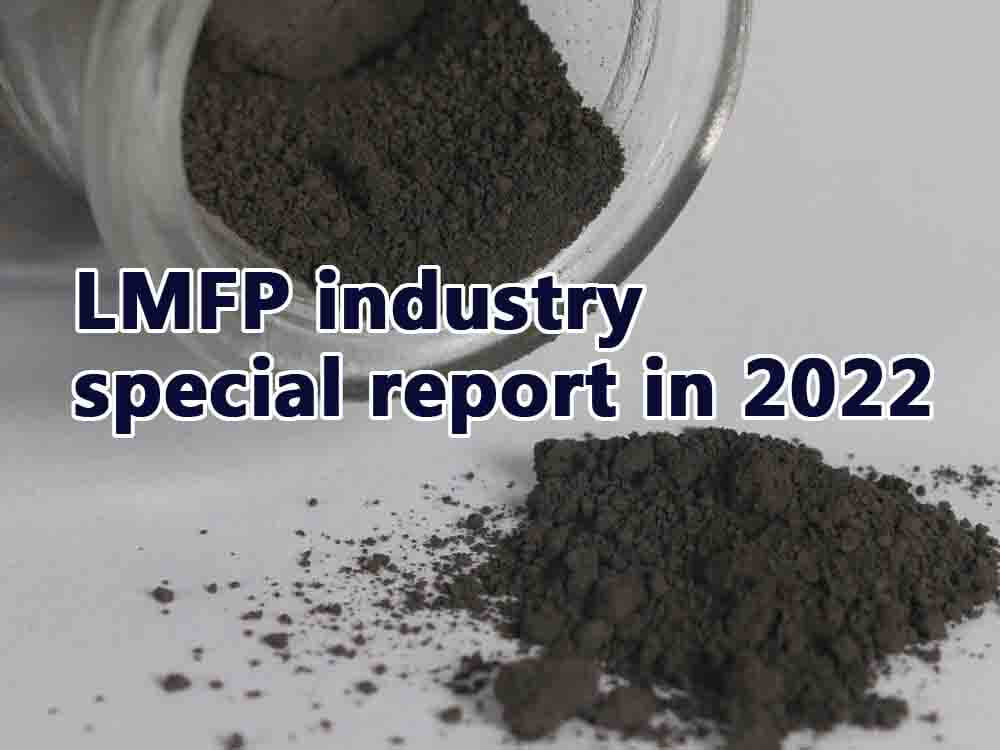
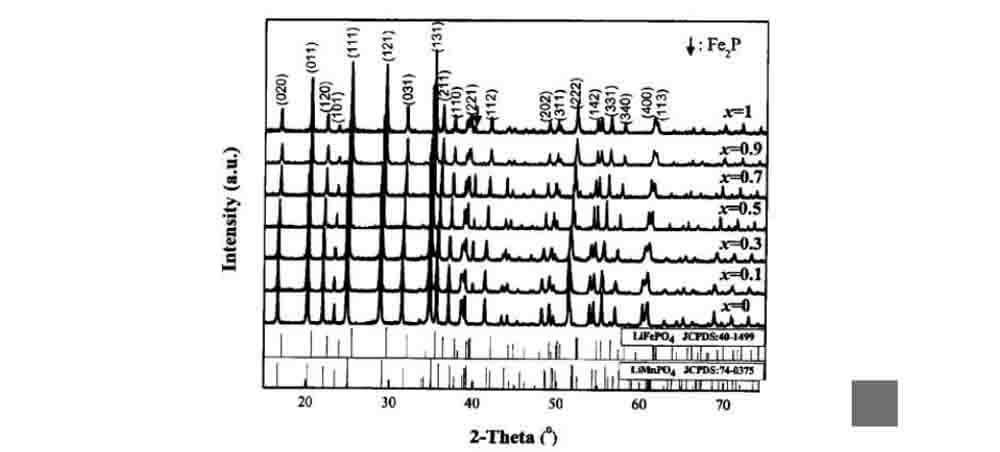
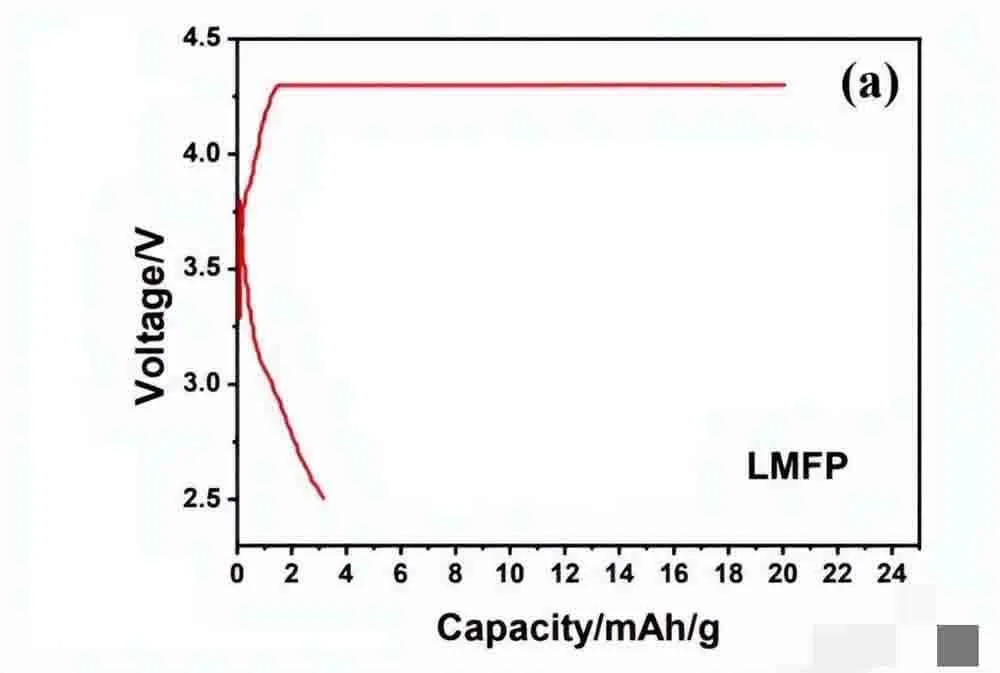
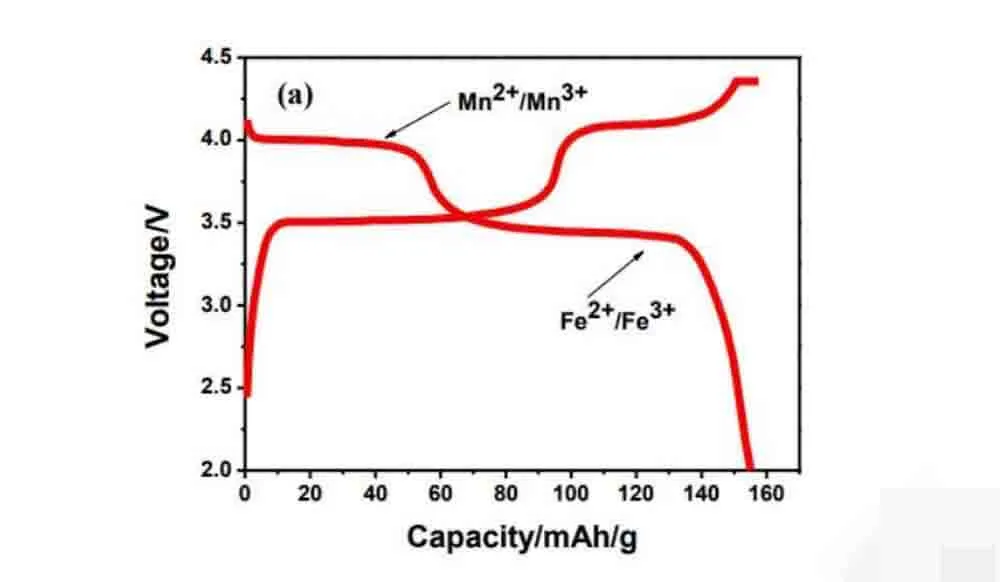
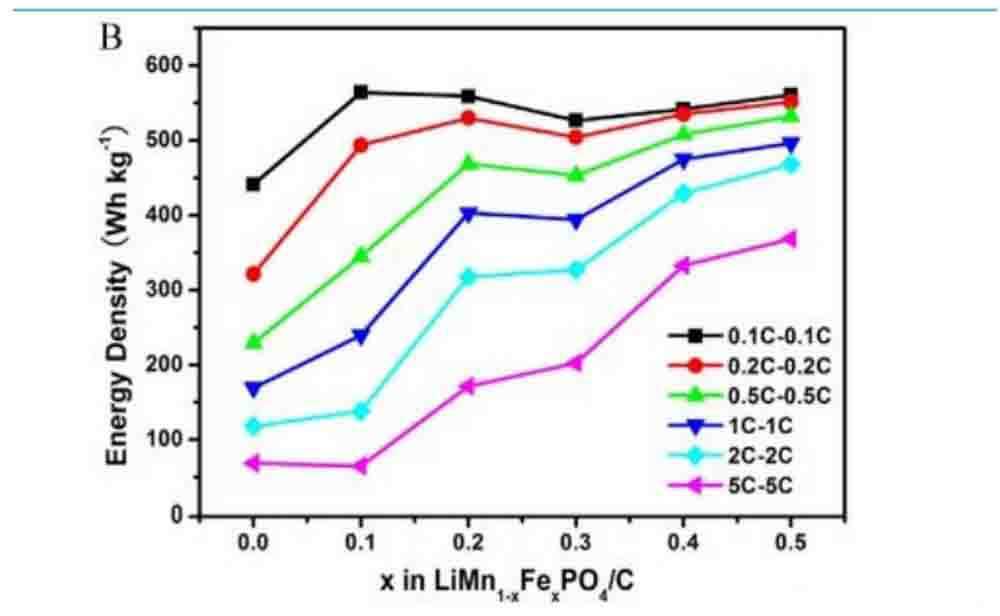

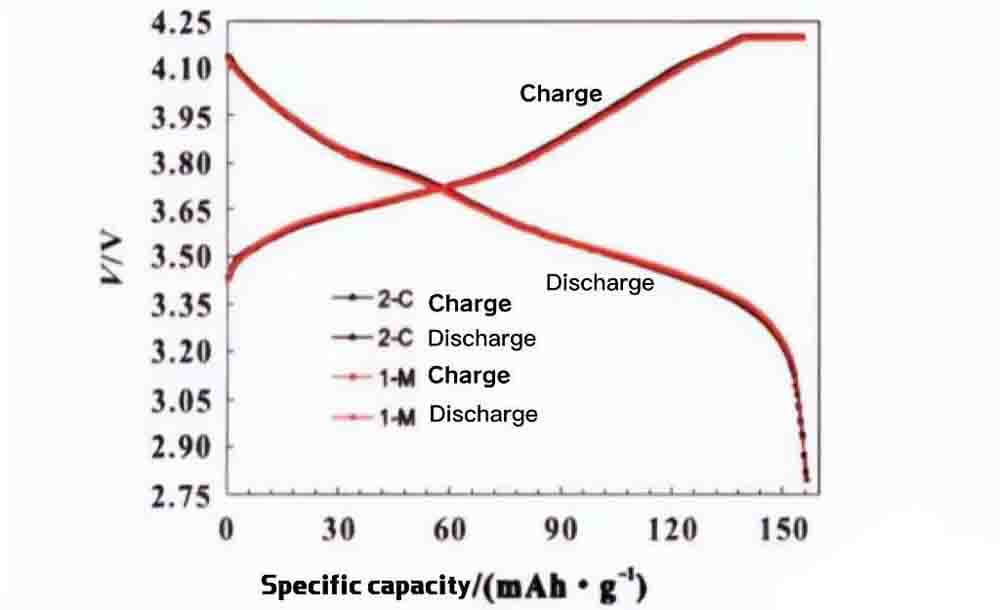
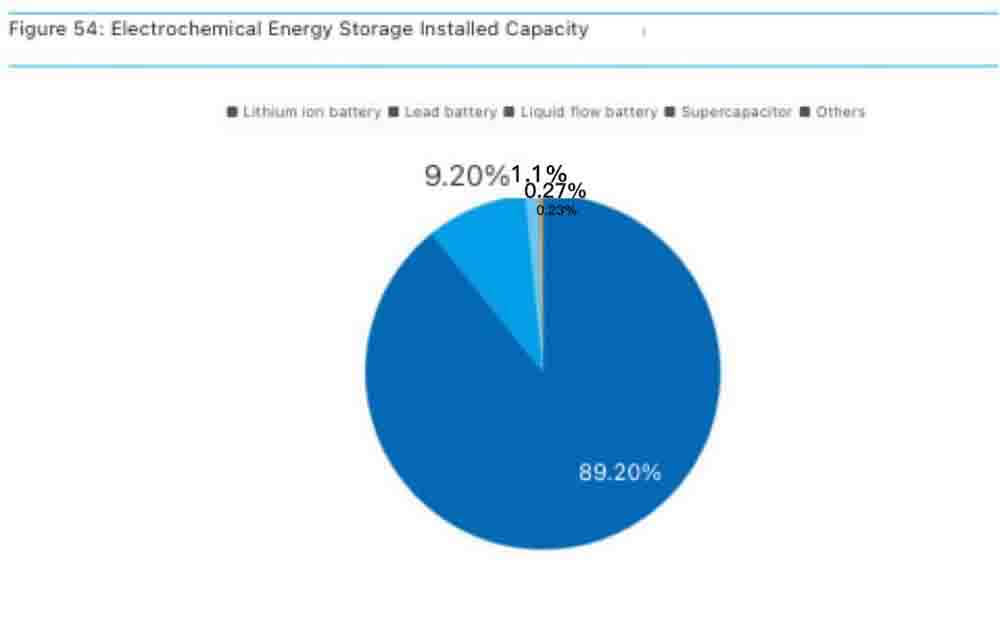
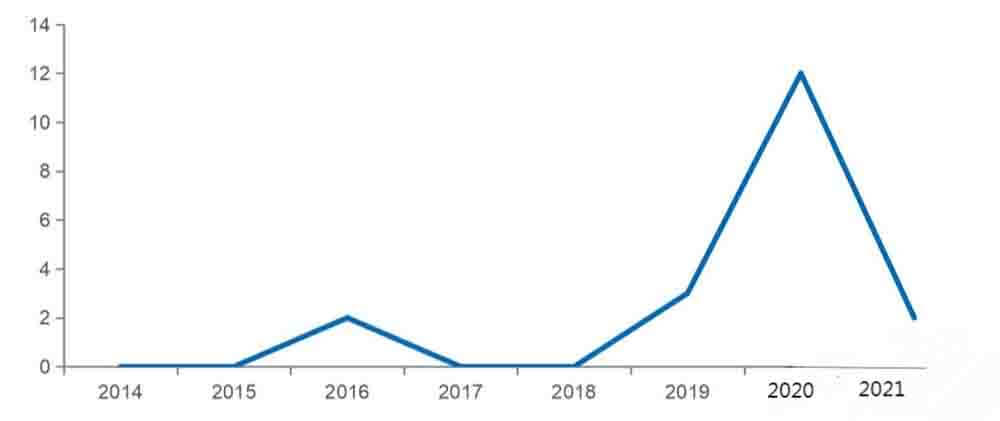
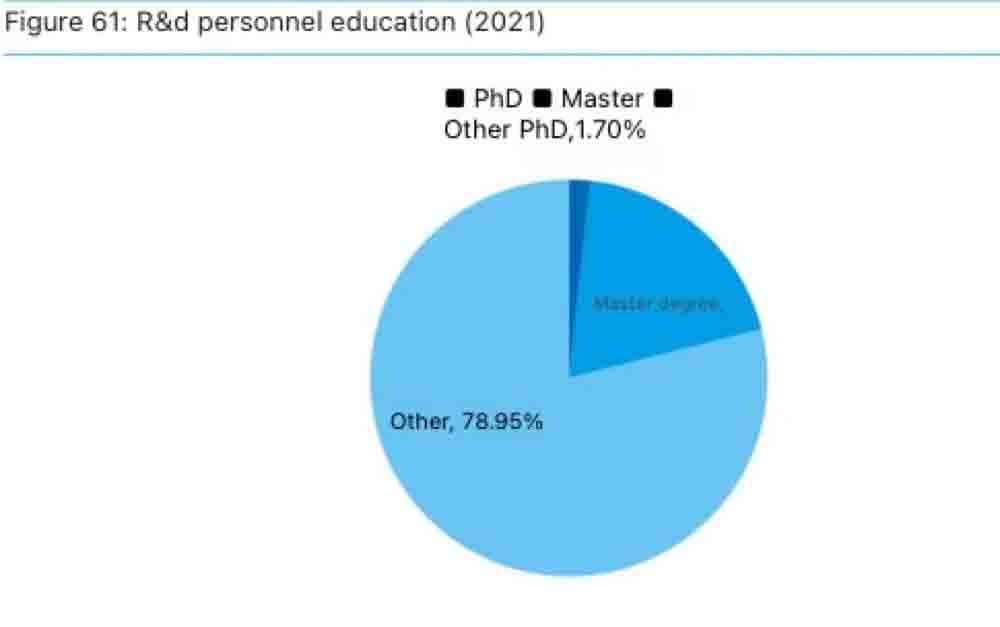
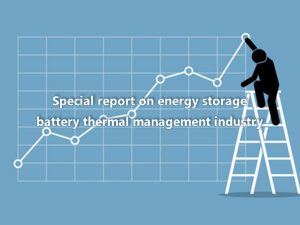
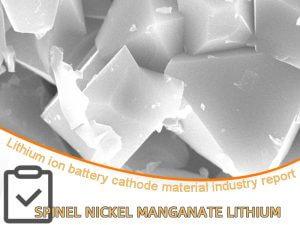
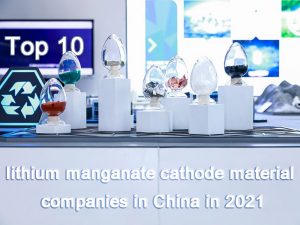



















1 thought on “LMFP industry special report in 2022”
Pingback: CATL will soon mass produce LMFP batteries - Yes Guaranty